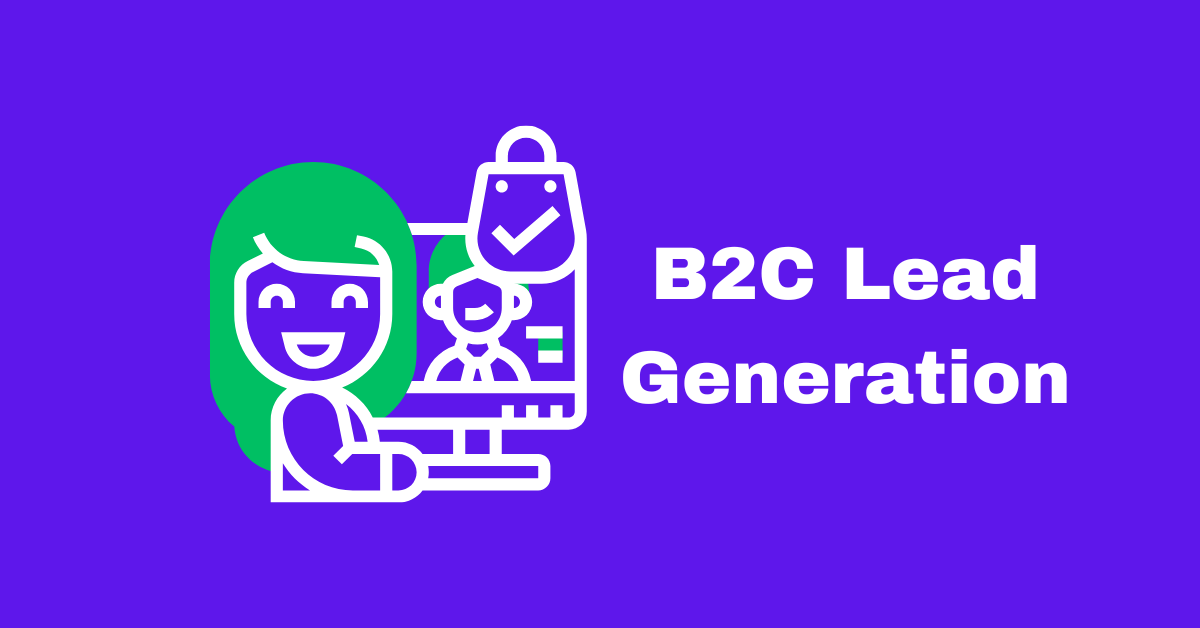
Getting leads is base for any organization especially for B2C business since they deal directly with consumers. An online presence is not enough to maintain the competitive advantage and win leads having to become customers. Lead generation in B2C is focused on obtaining contacts to potential clients so that the potential client chooses the relevant brand.
This blog provides an overview of B2C Lead Generation, what leads are, what approaches various brands have used and actual cases to learn from.
What is B2C, and Why is Lead Generation Essential?
Business to Consumer is a strategy where the company engages in sales with the end consumer as the customer, without any intermediaries involved. For example, buying a meal in a restaurant, buying clothes or enrolling for a streaming service. Due to weak consumer identification, B2C firms are under tremendous pressure to build brands in order to easily sell to incredible numbers of people.
Lead Generation is the act of finding people who require your products and are willing to pay sellers for it. You can thus manage these leads, guide them through the purchase funnel and make them buy the product. Specifically in B2C environment, lead generation can only be effective if it follows marketing initiatives that create traffic and attract revenue generating leads. know about getting potential clients.
5 Common B2C Business Models
Direct Sellers
These businesses sell directly to consumers through online retail platforms, ranging from large marketplaces like Amazon to smaller, specialized e-commerce stores. Department stores with an online presence, such as John Lewis, also fall into this category, offering a broad selection of brands.
Marketplaces (Go-Betweens)
This model connects buyers and sellers without owning any of the products or services themselves. Etsy is a prime example, hosting various artisans and allowing consumers to select their preferred sellers.
Advertising Model
This approach involves creating free, high-quality content that draws in visitors who then view ads on the site. Some visitors are likely to engage with these ads, eventually leading to purchases. Platforms like Huffington Post and the online Daily Mail exemplify this model.
Community-Based Models
These models build communities around shared interests—such as photography, fishing, or writing—where people can gather and interact with content related to their hobbies. For instance, Facebook allows businesses to target niche communities based on user interests.
Subscription-Based Models
In this model, companies charge a fee for access to exclusive content or services. News outlets like The Telegraph, which requires a subscription to access full articles, and streaming services like Netflix and Apple TV are well-known examples.
How B2C Differs from B2B Marketing
B2C and B2B approaches are distinct despite some overlap in products or services. Here are some key differences:
B2C (Business to Consumer)
- Targets individual customers.
- Focuses on selling to consumers rather than organizations.
- The customer typically makes the final decision.
- Purchases are often influenced by marketing and brand appeal.
- Generally offers lower-priced products.
- Sales are usually high-volume, aiming for wider reach.
- Sales processes are often quick, sometimes concluding in a single interaction.
B2B (Business to Business)
- Aims at businesses or organizations.
- Decisions are made by senior executives, such as CEOs.
- Products are typically higher-priced and designed for larger profit margins.
- Focuses on a smaller, more niche market segment.
- Sales processes are longer and more complex, involving multiple stakeholders.
Two Main Types of B2C Lead Generation
- Inbound Lead Generation – Customers find your brand through methods like SEO, content marketing, or organic social media.
- Outbound Lead Generation – Businesses reach out directly to potential customers using tactics like cold calls or emails.
Effective B2C Lead-Generation Strategies
Inbound Tactics
- SEO (Search Engine Optimization) – Optimize content for search engines to attract potential leads.
- Content Marketing – Share valuable content like blogs, videos, and ebooks to attract and educate prospects.
- Organic Social Media – Post consistent, engaging content on platforms like Instagram, Facebook, and Twitter.
Outbound Tactics
- Cold Calls – Personalized calls to prospective customers with compelling pitches.
- Cold Emails – Use emails to reach prospects, potentially via a referral partnership.
- Social Media Outreach – Engage with users directly on social platforms like LinkedIn and Facebook, tailoring content based on insights from analytics.
Challenges in B2C Lead Generation
- Unattractive Ads – Lackluster ads won’t capture attention; prioritize compelling visuals and clear CTAs.
- Irrelevant Landing Pages – Ensure landing pages are concise and user-friendly to encourage lead retention.
- Incorrect Use of Forms – Avoid overwhelming forms; keep it simple and to the point.
- Confusing Content – Provide content that resonates with your audience’s needs and preferences.

Top 9 B2C Lead-Generation Strategies
- Gated Content – Exchange valuable resources for contact details.
- Video Content – Create engaging videos to connect with audiences.
- Content Marketing and SEO – Publish optimized, quality content for search engines and social media.
- Paid Advertising – Utilize PPC ads on platforms like Google and Facebook.
- Personalized Campaigns – Tailor email and social media content for better engagement.
- Social Listening – Monitor discussions about your industry for insights to inform campaigns.
- Chatbots – Use chatbots to engage prospects and collect leads 24/7.
- Analytics – Track social and web analytics to refine marketing strategies.
- Pop-Up Offers & Trial Promotions – Offer free resources on your landing page to capture interest.
Examples of Successful B2C Lead-Generation Campaigns
- Chatbot by Databox – Engages visitors and collects leads round-the-clock.
- Trial Promotion by Sprout Social – Encourages hesitant buyers to try before purchasing.
- Social Listening by Spectrum – Monitors and responds to customer feedback.
- Paid Campaign by Lectera En – Uses compelling copy and visuals for lead capture.
- Gated Content by Trustmary – Provides useful resources in exchange for emails.
Tools for B2C Lead Generation
Platforms like Mailmunch provide comprehensive tools to streamline lead generation across your website and social media, helping to convert visitors into loyal customers.
Conclusion
Thus, understandable leadership is an essential component for B2C organizations to succeed in a very competitive environment. By concentrating on approaches potential customers may respond positively to—such as inbound techniques such as SEO or content marketing, and outbound methods like cold calls or emails, brands may well develop a stable customer base for themselves.
This awareness of these B2C leads generation features coupled with other various models and technologies assists organizations to build leads into customers for improved effectiveness and increased returns in the market.
